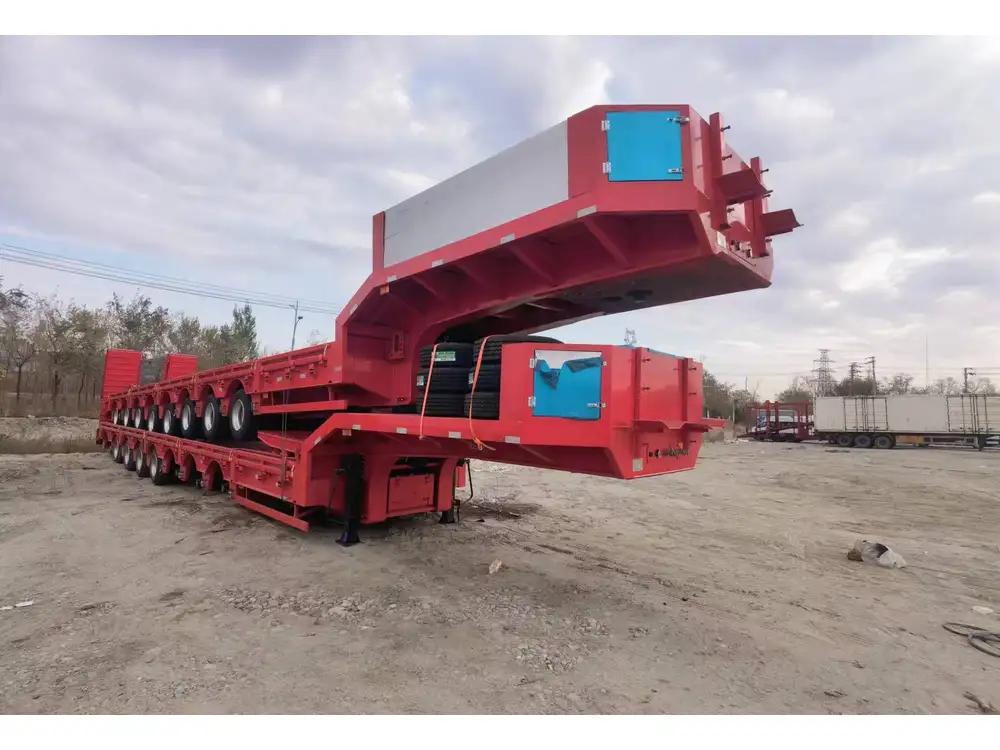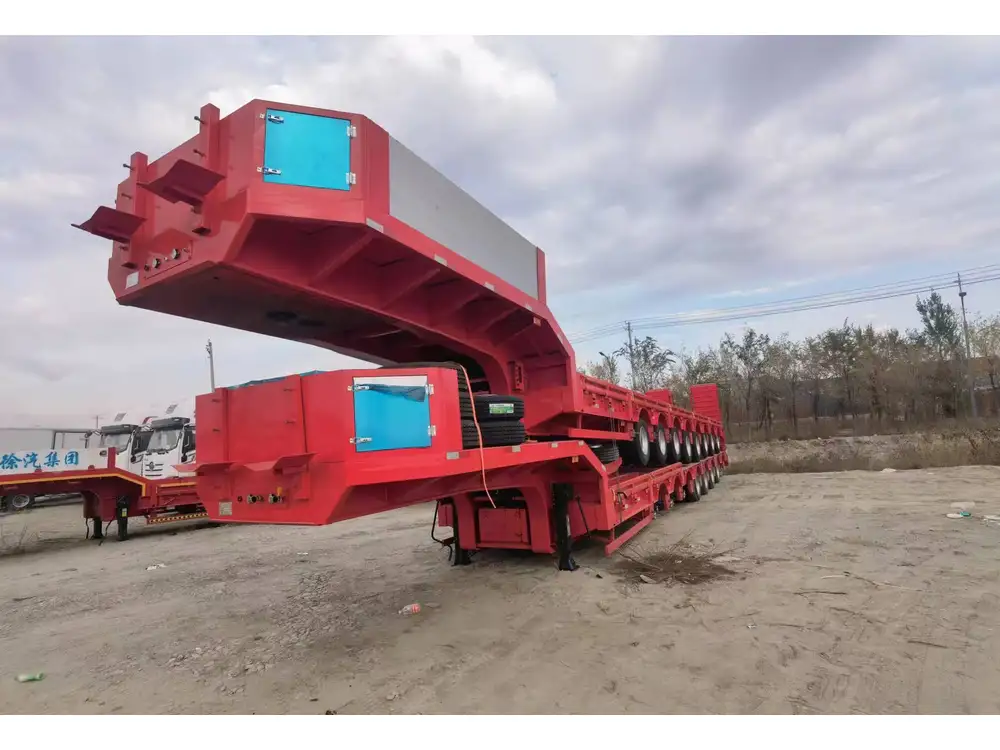When delving into the logistics realm, one often encounters the question: What is the total length of a semi-tractor trailer? This inquiry is crucial not only for manufacturers and shippers but also for drivers, fleet managers, and anyone involved in transportation and logistics. To fully comprehend the total length of semi-truck trailers, one must explore various aspects, including regulations, configurations, and practical applications.
Key Elements Defining Total Length
1. Overview of Semi-Tractor Trailers
A semi-truck, also known as a semi-tractor trailer or articulated vehicle, consists of two primary components: the tractor unit (commonly referred to as the truck) and the trailer. The tractor is the front portion that houses the engine and cabin, while the trailer is designed to carry cargo. It’s essential to recognize the interdependence of these units when calculating total length.

2. Standard Lengths
Table: Common Length Specifications for Semi-Tractor Trailers
| Component | Standard Length (Feet) | Remarks |
|---|---|---|
| Tractor Unit | 16 to 24 | Varies based on the model and brand. |
| Trailer | 48 to 53 | Most common lengths for standard dry van and flatbed trailers. |
| Total (Combined) | 64 to 77 | This varies depending on tractor and trailer configurations. |
The total length of a semi-truck can vary based on its configuration, cargo type, and regional regulations concerning transportation.
3. Regulating Bodies and Legal Compliance
The total length of semi-truck trailers is largely governed by state and federal regulations. The Federal Highway Administration (FHWA) stipulates maximum length standards for trucks operating on interstate routes.
Key Regulations for Length:
- Interstate systems: The maximum allowable length for a semi-truck (combined tractor and trailer) is typically 65 feet.
- State regulations: States may have varying laws regarding lengths, often permitting longer trailers under specific conditions, such as Hauling Permits.

4. Variations in Configuration
Tractors and trailers come in a variety of configurations, each affecting total length.
Types of Trailers
| Trailer Type | Length Range (Feet) | Typical Use |
|---|---|---|
| Standard Dry Van | 48 to 53 | General freight transportation. |
| Flatbed Trailers | 48 to 53 | Versatile loads, including oversized materials. |
| Reefer Trailers | 48 to 53 | Temperature-sensitive goods, such as food and pharmaceuticals. |
| Tankers | 40 to 60 | Liquid cargo transport. |
| Specialty Trailers | 28 to 53 | Used for unique cargo types or configurations. |
The selected trailer type for specific cargo can significantly influence overall length.
5. What Influences Semi-Tractor Trailer Length?
Many factors contribute to the overall measurement of length, including but not limited to:
Axle Configuration: The number of axles affects both the length and weight distribution of the entire unit. Common configurations include:
- Single Axle: Typically found in smaller tractors.
- Tandem Axle: Most common for heavy loads.
- Tridem Axle: Used for specialized transportation needs.
Cargo Type: Specialized cargo may require longer or wider configurations (e.g., double-decker trailers for certain freight or oversized loads).

6. Trailer Length and Weight Considerations
As length increases, so does the potential payload weight. Legal limits are established based on what can safely be loaded and transported.
Comparison: Length vs. Payload Capacity
| Trailer Length (Feet) | Typical Payload Capacity (Pounds) |
|---|---|
| 48 | 45,000 |
| 53 | 50,000 |
Note on Overweight Permits
Exceeding standard lengths often necessitates obtaining overweight or oversized permits, which require compliance with additional regulations.

7. Total Length Calculation
To accurately determine the total length of a semi-tractor trailer, one must include both tractor and trailer length:
- Formula:
Total Length = Length of Tractor + Length of Trailer
For instance, if a typical tractor measures 20 feet and is coupled with a 53-foot trailer, the equation is as follows:
Total Length = 20 + 53 = 73 feet
8. Industry Trends Affecting Trailer Length
The logistics and transportation industries are evolving, with manufacturers consistently innovating trailer designs to maximize efficiency and capacity.
Current Trends:
- Shorter Turn Radius: As urban areas expand, shorter trailers are becoming more popular, where maneuverability is a necessity.
- Aerodynamic Designs: Innovations in trailer shapes can lead to improved fuel efficiency.
- Double and Triple Trailers: Some businesses utilize multi-trailer configurations to optimize loads, complying with state regulations.
While double-trailer configurations can increase the total length beyond legal limits, they are employed strategically to manage a higher volume of goods effectively.

Addressing User Concerns
Common Questions About Semi-Tractor Trailer Lengths
Can I legally exceed the standard lengths?
- Depends on state regulation. Always check with local authorities for permits and allowable lengths.
What is the maximum length for specialized trailers?
- Typically can extend to 75-80 feet with permits, but check specific regulations based on cargo.
How do I choose the right trailer length?
- Consider your cargo type, delivery locations, and if specialized permits are required.
Conclusion
Understanding the total length of semi-truck trailers is not merely an academic exercise; it is a fundamental aspect of logistics management, impacting everything from route planning to safety regulations. By grasping the nuances of tractor-trailer configurations, regulatory standards, and industry trends, stakeholders can make informed decisions that enhance operational efficiency while ensuring compliance.
In the world of transportation, where every inch matters, having a thorough understanding of semi-tractor trailer lengths can ultimately lead to successful logistics solutions, lower operational costs, and improved service delivery.
By focusing on these details, we can provide valuable insights to our readers seeking a comprehensive understanding of semi-trailer dimensions, thereby establishing ourselves as a go-to resource in the trailer manufacturing and logistics industry.



